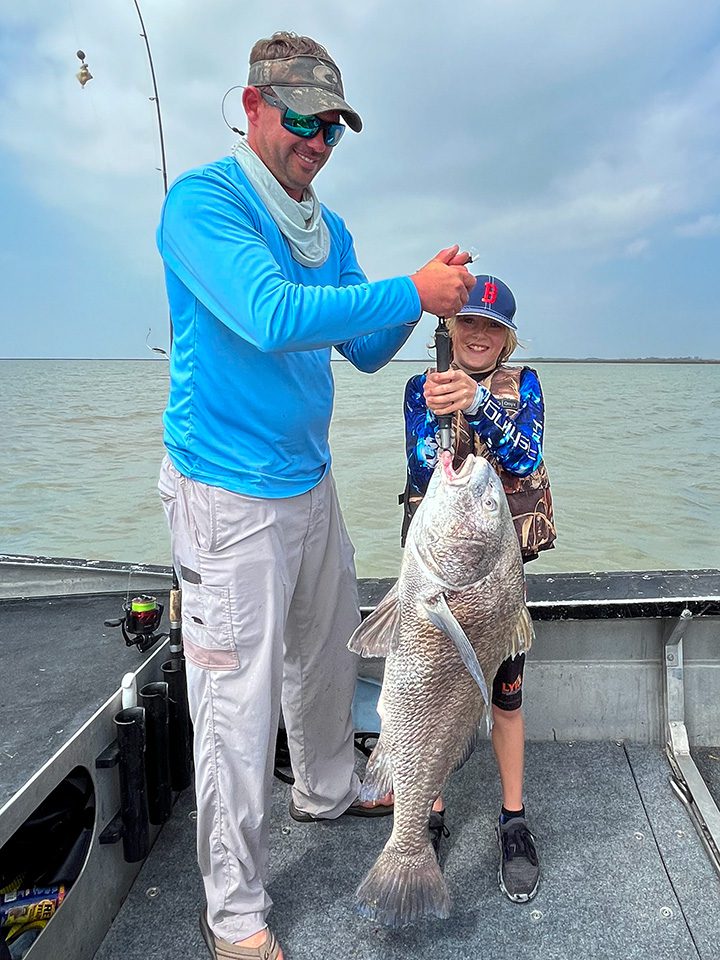
By CAM Staff
In some circles, black drum don’t get the respect they deserve. Maybe it’s their appearance? With weird chin barbells and a humped head, they hug the bottom, looking like the hunchbacked cousins of the sleeker redfish inshore anglers adore.
Or maybe it’s their reluctance to take a lure? Black drum feed primarily by scent, and while you might catch one slinging a spoon, targeting them requires bait, which is more effort than plug and paddletail aficionados are willing to put forth.
However, for anglers who aren’t too prissy to get their hands dirty, black drum have a whole lot to offer. They are the workingman’s drum, found nearshore and inshore throughout the Gulf of Mexico and up the Atlantic seaboard to New England.
Black drum pull hard, with powerful bulldogging runs regardless of size. And they grow quite large, reaching weights well over 100 pounds. On top of that, they provide consistent action in a wide range of areas where they can be caught. Shore-bound anglers can target them from docks, bridges, jetties and piers, where drum hunt crustaceans around structure. Surf anglers often connect with them on quartered blue crabs cast outside the breakers. From a boat, passes and inlets are prime feeding grounds as is nearshore structure. Shallow-water anglers find younger specimens way up in the estuaries tailing like redfish for fiddler crabs in tidal creeks.
Their movements are seasonal, but as long as you’ve got bait, you can pursue black drum pretty much anywhere you choose. Like most fish, they bite best on a moving tide, when your bait’s scent disperses over a wide area. They’ll eat halved blue crabs, whole fiddler crabs or mud crabs with cracked backs to let a little scent out, and also live or dead shrimp or fresh cut bait. On the northern end of their range, anglers add clams, mussels and blood worms to the array of baits a drum will eat. As long as your bait is sitting on the bottom and smelling like food, it’s likely to draw the attention of a drum.
Rigging and gear is pretty simple. A classic Carolina rig with just enough weight to keep the bait on bottom is about as simple as fishing gets. It will get the job done in most situations. Up in the creeks, where you’ll be doing more casting and maybe even sight fishing, baits can be fished on a jighead or even a simple hook with a split shot.
Tackle in the 20-pound class is a good starting point, and it’s wise to beef up to pull big drum off structure. They do get big. The IGFA world record, caught in 1975 off Delaware, weighed 113 pounds, 1 ounce. Fish in the 40- to 50-pound range are regular catches across the drum’s range.
Those big fish aren’t good to eat, though. The meat is often full of worms by the time fish reach weights heavier than about 15 pounds. Smaller drum are excellent table fare.